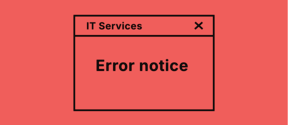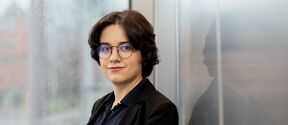Based on his personal experience, Olli-Pekka Heinonen told that around the globe, educational leaders are starting to wake up to the challenge Otto was describing.
‘Traditionally, education has been seen to have two meta-tasks. The first is to transfer everything that we have so far achieved as humans to the new generations. The second task is to help to create the conditions for the new generations to make their own future. It used to be so that if you took care of the first task, you automatically managed to tackle the other one also. But as Otto explained, that's not the case anymore. We need to tackle the separate tasks separately.’
Heinonen said he has seen marvellous educational strategies, but there is a gap in implementation. ‘We came to two conclusions. First, we need to make a new interpretation what we mean by a good education system, and second, the main aim of education systems should be human and planetary flourishing also for the future generations.’
Minna Halme shared her experience that when working with companies, she sees a lot of faster and faster walking, but the direction might not be the right one.
Halme emphasised courage needed to take transformative action, ‘not to say the nice things only, but as a group move towards things that are a bit against what is commonly accepted, like questioning the economic growth paradigm.’
On the other hand, she also sees positive signs. Many of the young entrepreneurs are starting to put the planet first, and some of them are even willing to pay more taxes to support the society.
Tua Björklund continued Scharmer's idea that when goals and people involved in the process are subject to a constant change, it is essential to find the will to start working together. ‘What is the glue?’
‘When we're working with change, we need to be frustrated with the current situation, but also optimistic that we can have an influence, otherwise there are limited incentives to work with that.’
What could be creativity applied to systems thinking? ‘To me the creativity is doing something about the knowledge. We are not just understanding, but trying to do something – to create those preferred futures together.’
Mikko Dufva emphasised that the futures don't just emerge, they are created.
‘And the key question is then, how consciously. Are we really conscious about where our everyday actions lead us to? Are we going into the self-destruction mode or into something radically different, hopefully radically better?’
‘The other question is, who are actually getting their voices heard?’ I think it's not a coincidence that we are in the situation that we are now in. 'We are not ready for what has already happened', as futurist Alex Steffen has put it.’
Humankind has been very successful in implementing its visions. Dufva highlighted that we need to unlearn, to get rid of our old futures of efficiency and colonization. ‘We need sense-making, but we also need "sense-breaking". I think the futures we want do exist in our hearts, but we need to connect to those and then find those via these other ways of knowing’.
Kaisla Soljanto felt optimistic. ‘This discussion about new methods of thinking and new tools for future problems is essential to all of us as future architects, engineers, designers or economists. We all need a whole new set of problem-solving tools. We will face the problems, we have to tackle them, so the education has to set us up with those tools.’
Scharmer reminded us that many people are already ready for change. ‘We all know that there are moments when profound change can happen very quickly, like when the Berlin Wall collapsed. There is the old system that becomes more and more dysfunctional, the old body of collective behaviors.’
‘When systems collapse, you fall to your relationships, and therefore it is important to nurture relationships, create connections that are not just interesting and creative, but that also nurture the human and the shared flourishing and well-being. With deep learning practices, a lot can happen in a short time.
‘"A crack" is an opening for change. As the panelists pointed out, change starts small. Small seeds, prototyping and really putting the attention on where the cracks are to find the leverage points. The profound [technological readiness for] disruption of clean energy transportation was already known 10 years ago, but no-one was acting. The biggest problem in most systems is that the biggest systems are out of touch with reality.’
Minna Halme pondered that Aalto could help its students and faculty to work better between the head and the heart, or intuition and analysis. ‘At the School of Arts, Design and Architecture people are great with intuition, imagination and related methods, and how little of that still migrates to the rest of us, especially in terms of the values of it. We could more combine those two: intuition and analysis.’
Tuomas Auvinen pointed out that despite the academic freedom and autonomy, universities also have relatively strict structures and processes. ‘I think there is now time to create “a crack”. Hopefully, looking back at today in ten years’ time, we can say that this is one of the cracks that started emerging in our structures. We could start pushing more of these hand-heart or intuition types of learning. Maybe we are now opening a crack that will then develop into something new when we move forward.’
Aalto experiments with new ways of learning and knowing
This Spring, Aalto offers its staff a unique opportunity to experiment with transformative learning methods, which are based on Theory U and can initiate changes in mindsets and remove invisible barriers to creativity.
At the heart of the transformative learning is to learn skills that we can use to embrace today’s complex challenges, break boundaries, and bring new radically creative perspectives into our day-to-day operations. The workshops are facilitated by Arawana Hayashi and Ricardo Dutra.
Embodied intelligence, intuition, and empathy are forms of knowledge that are more inclined to recognize invisible systemic factors and dynamics. In the workshops we experiment with how to give space to other modes of knowing besides rational reasoning.
text: Tiina Toivola and Maria Joutsenvirta
Due to permissions, the kick-off lecture and panel is available only to the Aalto community, and viewable with Aalto log-in. If you feel that you’d like to take part in Capacity Building of Creative Radicals project workshop on May 18, please contact Kirsi Hakio, kirsi.hakio@aalto.fi.

















